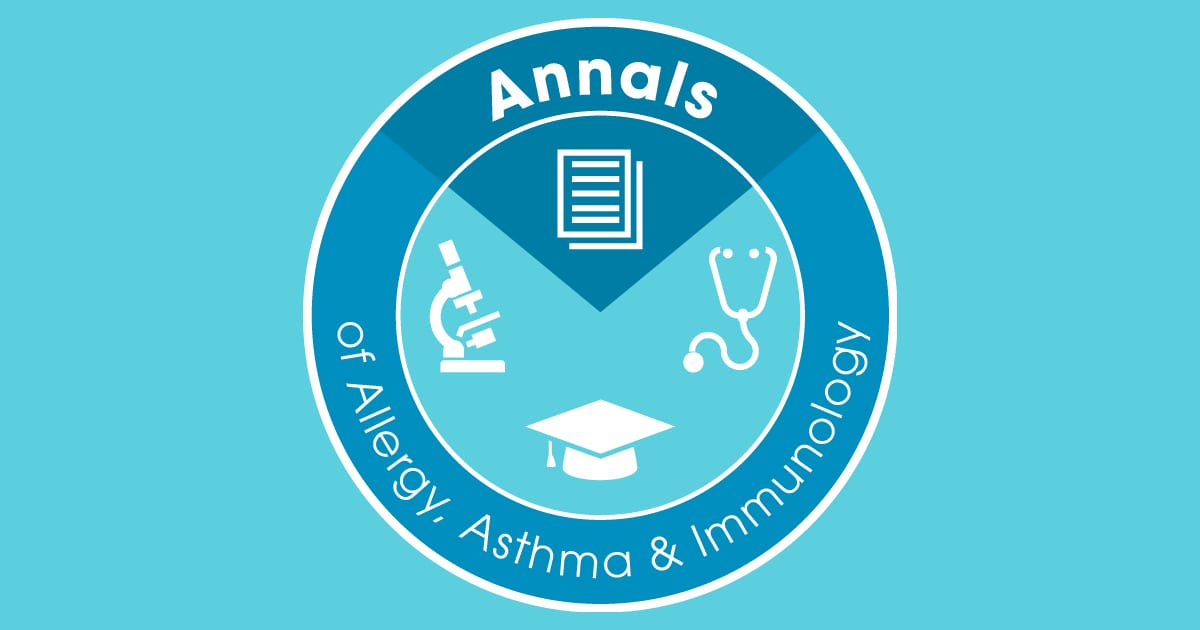It must be October. The temperature outside is going down, and we are preparing for an exciting College annual meeting. Little goblins and ghosts are getting ready for Halloween and the joys of trick or treating. Those little trick or treaters with food allergies have it a little harder than those without, but have you thought about the impact of social and economic factors on our patients? This month’s Annals is focused on socioeconomic and racial disparities in food allergy.
Our CME review article this month examines the socioeconomic determinants of food allergy and how these determinants contribute to the overall burden of disease. Other reviews include an insight into the health disparities seen in pediatric food allergy and a discussion of how food insecurity affects children and adults with food allergies. Focusing on ways to improve care for children with food allergy, another review examines ways in which the school environment can be used to address disparities and improve management. Read a perspective for advice on how you can use the school environment to overcome barriers to treatment in underserved populations. These are impactful and important articles that stress the important role of allergists in the individual care of these patients, and as advocates more broadly for the care of all food allergic individuals.
Don’t forget our Marginal Zone feature, which this month considers how food allergens feel as they meet for a Food Allergen Support Group. Always a good chuckle!
Our original articles this month provide novel research that will expand your understanding and care for your patients. We have a study looking at allergy providers’ knowledge of cannabis, an important article as some of us know much about the subject, but others really have little knowledge. To help you provide better care to your food allergic patients, we have an article looking at the utility of a tool to measure anxiety in parents of food allergic children. Other articles are focused on asthma – looking at ultrasound as a potential diagnostic tool, the outcome of biologic use by subspecialists, and the epidemiologic trends of asthma in the United States and Canada. We also have drug allergy related articles that examine the utility of the lymphocyte transformation test, as well as an overview of outcomes of long-term amoxicillin hypersensitivity study.
Several of our letters this month are focused on food and drug allergy, providing outcomes of several small studies and a potential warning about acquiring peanut allergy following an organ transplant. If you have medical students rotating through your clinic, you will want to check out the two-week outpatient allergy clinic curriculum in this month’s Annals.
With the College’s Annual Scientific Meeting approaching soon, it seems only fitting that this month we have the third installment of the history of the American College of Allergy, Asthma & Immunology written by ACAAI Historian Dr. Joseph Bellanti. This impressive article highlights the continued growth and achievement of the College over the past decade. This is a joyful must-read for every member of the College.
These are only some of the outstanding manuscripts included in the October issue of Annals. So, while you carve your pumpkins and put up your skeletons and spiders, be sure to read this issue — it is packed full of information that will increase your knowledge and improve the care you provide to your patients.
And, as always, if you have any comments, please consider sending a correspondence to Annals (email us at annals@ACAAI.org). I am always excited to hear how Annals has helped you improve the lives of your patients!
Mitchell H. Grayson, MD, FACAAI
Editor-in-Chief


